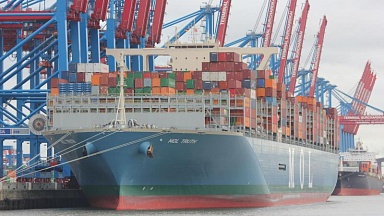At the port of Rotterdam, the largest freight port in the EU, for instance, empty containers, which are crucial to Asian exporters, are stranded amid a growing backlog of undelivered cargo at the port, according to media reports.
According to the Port of Rotterdam, more than a quarter of the containers transshipped in Rotterdam is from China or has China as its destination.
The yard density at the deepsea terminals has been extremely high over the last months due to unreliable deepsea schedules, high call sizes and the longer dwell times of import containers, a statement that the Port of Rotterdam responded to the Global Times on Wednesday.
Industry insiders predict that the situation could be intensified in July and August when the holiday season in Europe begins.
While the situation at ports lingers, several traders told the Global Times on Tuesday that they have diverted their goods, especially those value-added and urgent ones, from sea shipping to the intercontinental freight trains.
«We had several containers of electronic products waiting to be delivered back to China. But considering the possible risks of prolonged delivery time via sea transport, we have chosen freight train, which is much faster and more reliable,» a Ningbo-based trader told the Global Times on Tuesday.
The cargo train from Europe to China has been relatively more reliable, and the number of freight trains jumped significantly this month compared 12 trains in May, a Yiwu-based trader, who is a veteran industry insider, told the Global Times.
A total of 22 China-Europe freight trains from Europe arrived in Yiwu, the world’s largest small commodity trade market in East China’s Zhejiang Province, so far this month. And if trains from Russia are included, the number is 38, according to the Yiwu trader.
About 60 percent of ships traveling from Europe to Asia in April and May this year experienced delays, per media reports. There will be longer wait time for ships in all of the major Nordic ports, Dexon International said.
In a statement sent to the Global Times on Tuesday, Maersk said that the current congestion is not only impacting Maersk.
«We observe that a lot of European ports are facing issues with labor availability at terminals but also with trucking capacity available... many customers are taking longer to clear their cargo from the terminal resulting in higher dwell and high yard density impacting productivity,» Maersk said.
But Maersk stressed that «empty positioning remains high priority,» and the company is planning to move empty containers back to Asia, not only from Europe, but also from other places to cater for the export demand.
Meanwhile, the situation is improving as the Port of Rotterdam ramp up efforts on easing congestion.
While delays may occur in some cases, it is exceptional, the Port of Rotterdam said, adding that «there is no such queue in the port area or at the terminals, and empty boxes can still be loaded on vessels that are Asia bound.»
But, the port added that «we do see vessels waiting for German ports at anchorage in Rotterdam as waiting times for German ports have increased due to the recent strikes and industrial actions.»





